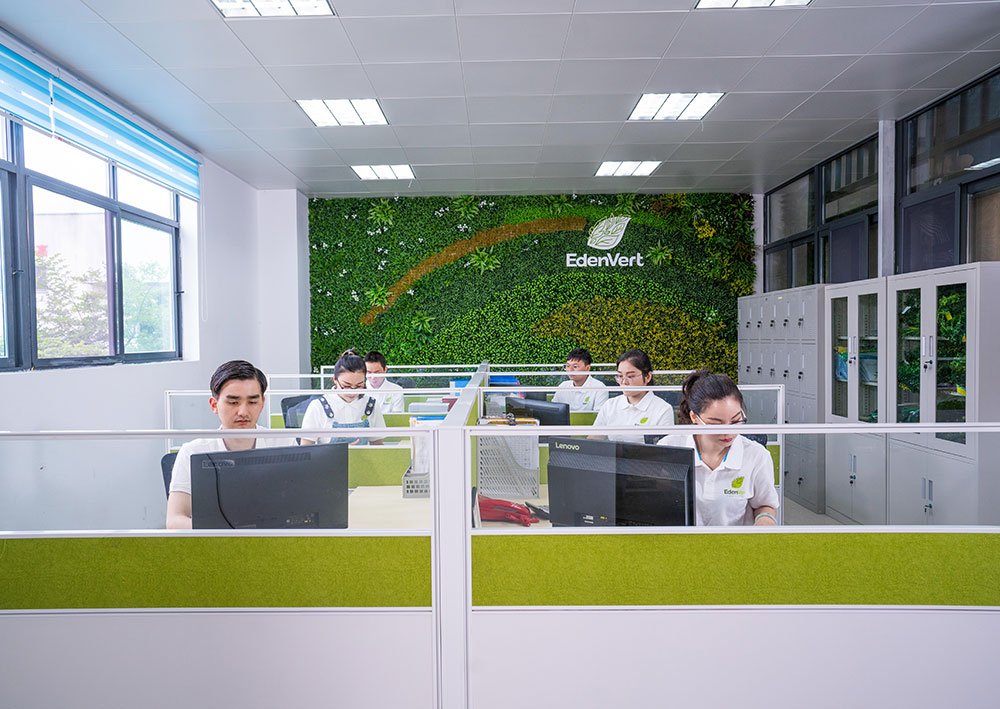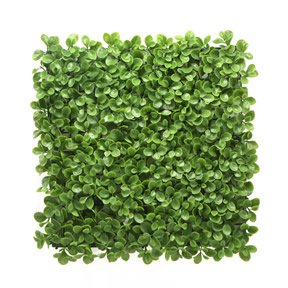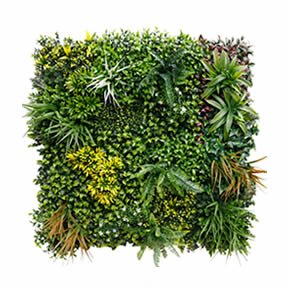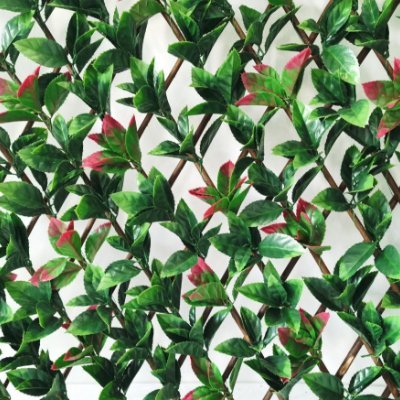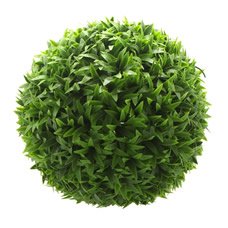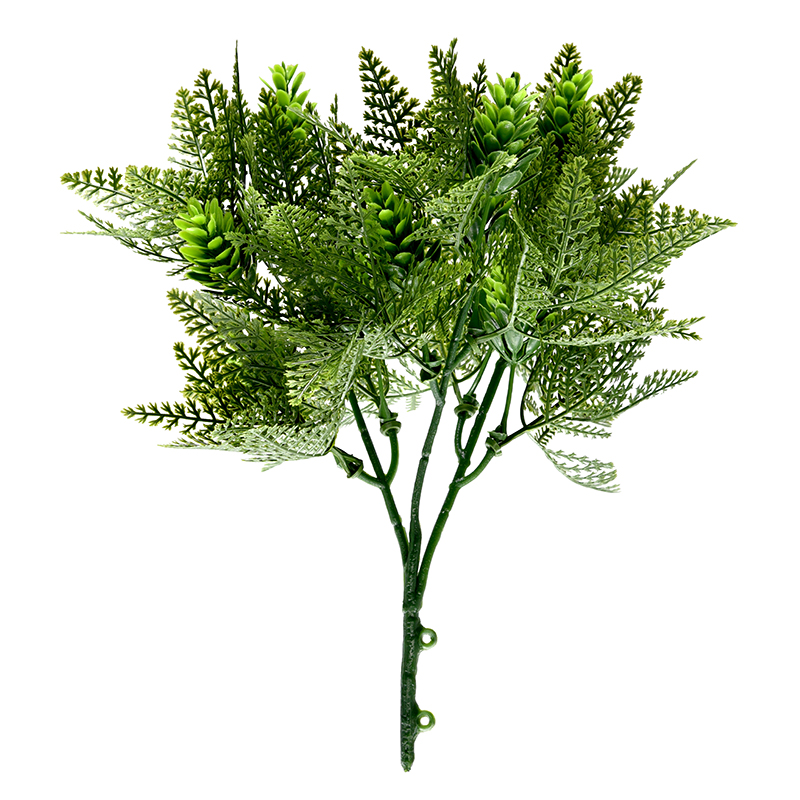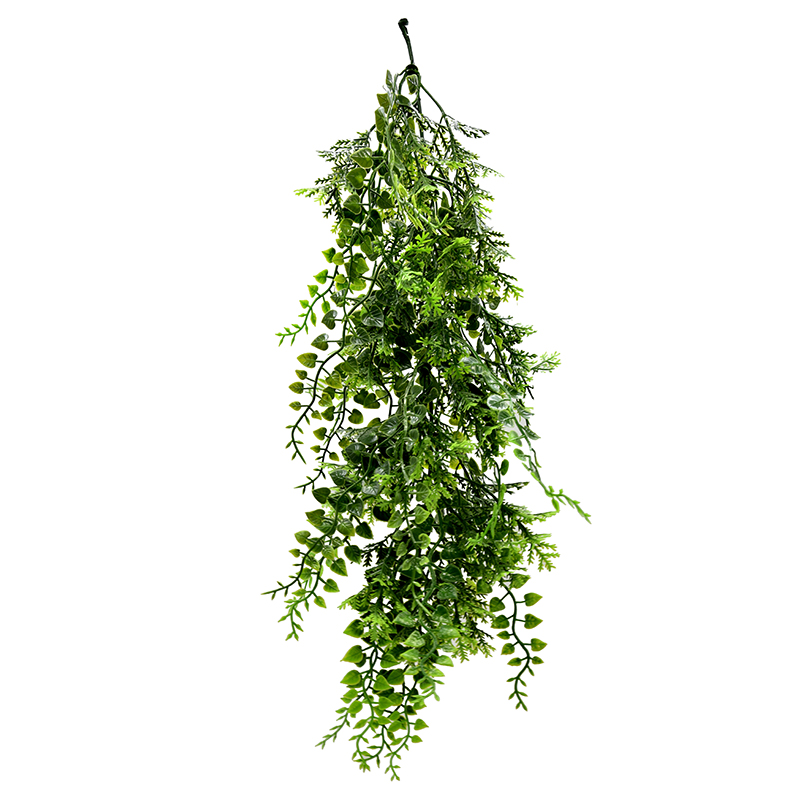Explained: Why Are Fake Plants So Expensive?
 2024 11 4
2024 11 4In contemporary residential and commercial design, fake plants are increasingly favored for their maintenance-free, and long-lasting aesthetic appeal. However, when faced with the variety of products on the market, some consumers may wonder why these seemingly simple fake plants come at a premium price.
The reality is that the craftsmanship behind fake plants goes far beyond what meets the eye. Whether it’s realistic plant walls, stylish faux succulents, or refined artificial flowers, these pieces are crafted from carefully selected, high-quality materials with meticulous attention to detail.
Why are fake plants so expensive? Let’s delve deeper into why investing in these faux wonders is worthwhile.

- What Material Are Fake Plants Made of?
- How Are Artificial Plants Made?
- How Size and Shape Drive the Cost of Fake Plants
- How Customization Impacts the Price of Artificial Plants
- How Shipping and Packaging Costs Affect Fake Plant Pricing
- How Labor Costs Affect the Price Tag of Fake Plants
- Real vs. Fake Plants: The Hidden Costs of Maintenance
- Finishing Thoughts
What Material Are Fake Plants Made of?
Materials are the key to selecting fake plants, influencing not only appearance but also resistance to sunlight, fire, and safety factors. When selecting artificial plants, prioritize trusted manufacturers to ensure the right balance of appearance and durability. Here’s a quick guide:
| Material | Sun Protection | Flame Retardant Performance | Other Characteristics |
| Silk | Poor (fades in sunlight) | Low (not ideal around flames) | Soft texture, realistic appearance |
| Polyester | Moderate (better than silk) | Low (lacks strong fire protection) | Common material, everyday choice |
| PVC (Polyvinyl Chloride) | High (durable in sunlight) | High (strong fire resistance) | May contain harmful chemicals; opt for phthalate-free |
| PE (Polyethylene) | High (good sun resistance) | Moderate (less fire-resistant than PVC) | Flexible, natural look |
| Latex | Moderate | High (good fire resistance) | Realistic feel, balanced performance |
How Are Artificial Plants Made?
Creating an artificial plant is a complex process that involves careful attention to details, much like assembling a puzzle where every part, from leaves to stems, plays a key role. Here’s a breakdown of the steps:
Step1: Design Phase
The foundation of the process, where each element is meticulously planned. For example, designing a faux Eucalyptus leaf requires close study of real leaves to replicate its characteristic shape and texture. A misstep in this phase results in a plant that looks unnatural and tacky.
Step2: Material Selection
The choice of material affects both the plant’s realism and durability. For example, high-quality silicone can make artificial succulents feel soft and lifelike, closely mimicking the plant’s texture. On the other hand, cheaper plastic creates a toy-like appearance, detracting from its authenticity.
Step3: Molding & Shaping
This is where the design takes physical form. For example, a eucalyptus leaf requires a specialized mold to capture the exact details. A well-made mold reflects every curve and cut, while a poorly made one leaves the plant looking flat and unconvincing.
Step4: Coloring
More than just applying green, the process involves blending various shades to replicate natural light and shadow effects on a single leaf. A carefully painted Eucalyptus leaf uses multiple tones for depth and realism, whereas a rushed job results in a flat, uniform green that looks artificial.
Step5: Assembly
The final step, where everything comes together. A well-assembled fake plant has branches that move naturally and roots that are properly positioned in the pot. Poor assembly leads to misplaced leaves or an unstable structure.
The attention to details in every stage of production is what differentiates a lifelike plant from an obviously fake one. Investing in high quality artificial plants means choosing expert design and craftsmanship.
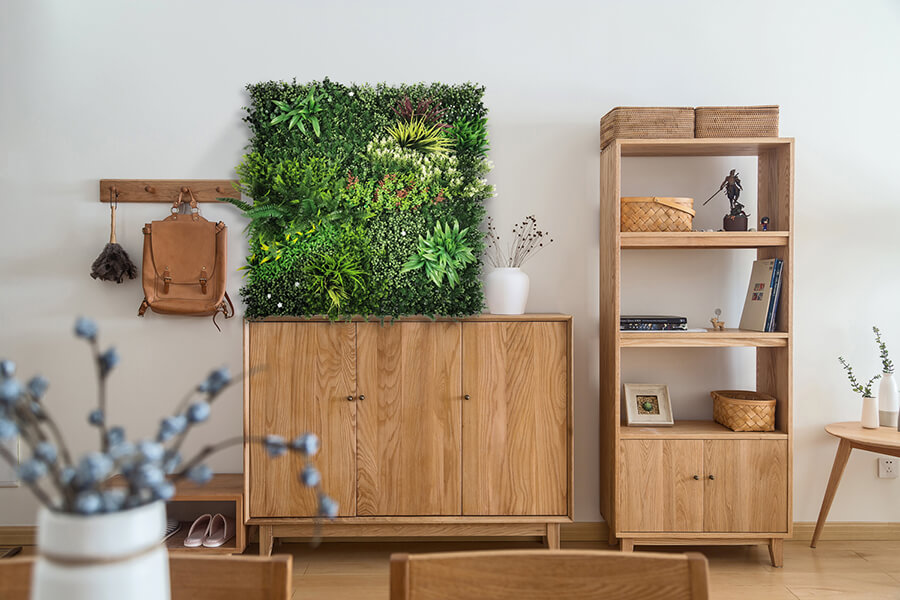
How Size and Shape Drive the Cost of Fake Plants
Exploring how size and shape impact the cost of fake plants reveals the complexity behind their pricing. Here’s a look at the key factors:
| Factor | Description |
| Molds & Materials | Larger plants require more molds and materials. A small flower might need only premium silk and foam, whereas a large olive tree involves multiple molds and extensive materials. |
| Time & Labor | Crafting intricate designs or ensuring durability for large plants takes significant time. A small succulent may take a day, while a life-sized evergreen can take weeks. More time results in higher labor costs. |
| Realism & Details | Achieving a lifelike appearance involves meticulous attention to detail, such as leaf veins and color gradients. Small decor items may need fewer details, but larger centerpieces require a high level of accuracy. |
| Storage & Shipping | Larger fake plants need more space for storage and special packaging for shipping. Big faux trees require careful handling and eco-friendly packaging, adding to the overall cost. |
When considering the price of a large artificial plant, remember the detailed process behind it. From premium materials to intricate design and careful shipping, these factors contribute to the overall value of the plant.
How Customization Impacts the Price of Artificial Plants
Artificial plants offer remarkable customization options, allowing them to perfectly fit any unique design or requirement. Whether you want to introduce tropical palm trees to a city that doesn’t naturally host them or need a specific foliage pattern to match your brand’s aesthetic, customization makes it possible. This level of tailoring affects the overall cost, making it a more intricate process than simply picking a generic plant off the shelf.
Customization involves several key aspects:
| Customization Aspect | Details | Impact on Costs |
| Shape and Size | The geometry of the plant is crucial. Creating oversized pieces, like a large monstera for a hotel lobby, requires precision. | Precision work elevates production costs. |
| Color | Specific color requirements, such as a unique pink for cherry blossoms. | Time-consuming pigment blending increases costs. |
| Material | Choosing materials for specific environments, like UV-resistant or fire-retardant options. | Specialized materials raise costs. |
| Design | Elaborate designs, such as mixed foliage with varying textures and colors. | Complex production processes add to cost. |
Working with an experienced factory manufacturer ensures a smooth customization process where your vision is brought to life while maintaining industry standards and cost efficiency. Custom projects involve careful consideration of aesthetic details and production complexities, each contributing to the final cost.
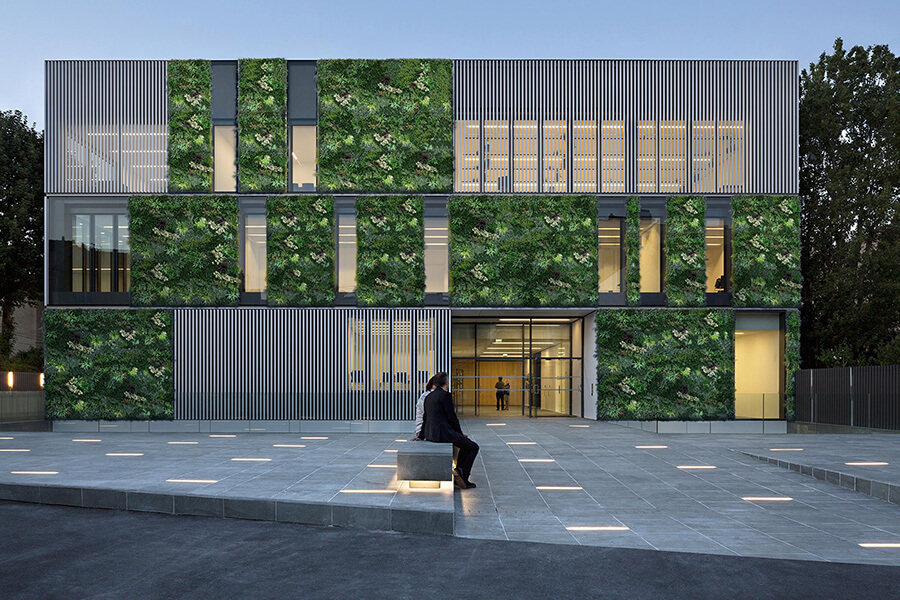
How Shipping and Packaging Costs Affect Fake Plant Pricing
Shipping and packaging are critical to maintaining the quality and pricing of faux plants. The risks associated with shipping include potential damage to plants, such as bent leaves or crushed petals, which is especially concerning for bulk shipments.
To address these risks, EdenVert employs a range of packaging solutions designed to offer maximum protection. Our packaging options include sturdy cartons that shield plants during transit, PVC handbags and roll packing for convenience and easy handling, and floral boxes that not only protect but also enhance retail presentation or gift-giving appeal.
The transit process presents additional challenges, as plants must endure bumps and jolts throughout their journey. Therefore, EdenVert’s packaging is specifically designed to withstand these conditions and ensure the plants arrive in excellent condition.

The additional cost associated with shipping and packaging reflects the effort required to maintain the plants’ quality and craftsmanship until they reach their final destination. This investment ensures that the meticulous work put into creating each plant is preserved and delivered in pristine condition.
How Labor Costs Affect the Price Tag of Fake Plants
In the world of fake plants, labor costs are a critical yet often overlooked factor. So, why are fake plants so expensive? The answer lies in the skilled labor required for their creation. The high price reflects the craftsmanship and expertise involved in making each plant.
In China, a hub for premium artificial plants, the process blends mechanical precision with human artistry. While machines may shape the basic structure of a plant, it’s the skilled hands that refine the details, ensuring each piece closely resembles its natural counterpart. For instance, a talented artisan carefully arranges each component of a plant, adding the final touches that make it vibrant and authentic.
Labor costs in China reflect the craftsmanship involved. Skilled workers earn between $800 and $1000 per month, and given that creating a single plant can take several hours, it’s evident how labor contributes significantly to the final price.
Thus, when admiring a realistic artificial plant, it’s important to recognize that its value stems from the dedication and expertise of the artisans. The blend of technological accuracy and human touch brings these plants to life, making them more than just decorative items but a testament to skilled craftsmanship.
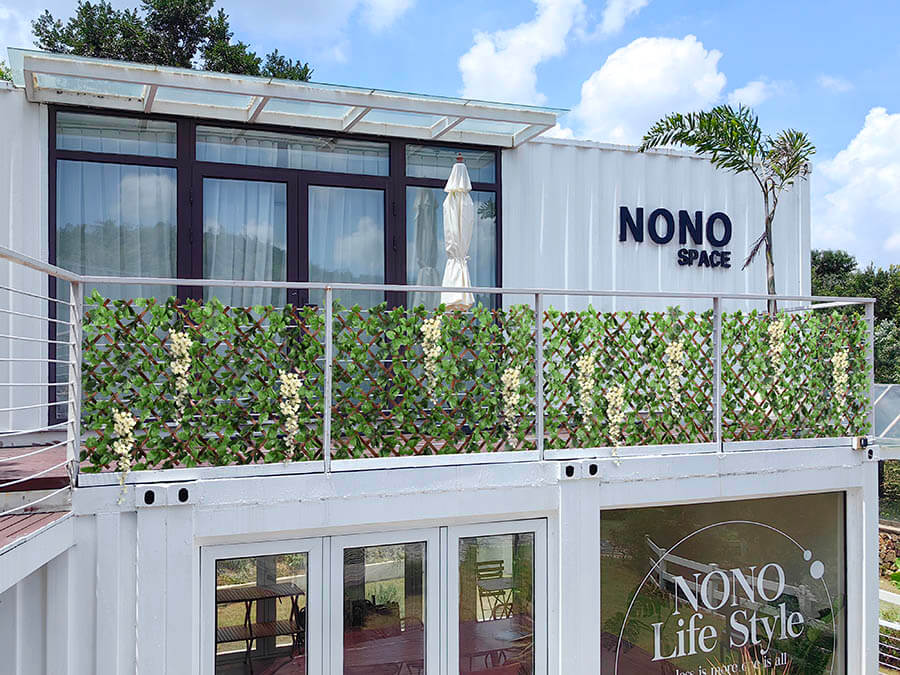
Real vs. Fake Plants: The Hidden Costs of Maintenance
When deciding between real and fake plants, maintenance is a crucial factor to consider. It’s not just about the initial cost; ongoing care also plays a significant role. Real plants require consistent watering, appropriate sunlight, and regular attention, while fake plants only need occasional cleaning to stay vibrant.
Here’s a comparative overview of annual maintenance costs for real versus fake plants:
| Aspect | Real Plants | Fake Plants |
| Initial Costs | Typically lower, but varies with plant type and size. | Generally higher, but depends on quality and size. |
| Watering | Requires regular watering. | No watering needed. |
| Sunlight | Needs adequate sunlight or artificial light. | No sunlight required. |
| Fertilizing | Needs periodic fertilizing to thrive. | No fertilizing required. |
| Pruning | Requires regular pruning for health and appearance. | No pruning needed. |
| Pest Control | Susceptible to pests and diseases, requiring treatment. | No pests or diseases. |
| Cleaning | Needs occasional cleaning to remove dust and debris. | Periodic dusting to maintain vibrancy. |
| Replacement Costs | Potential costs for replacing dead or unhealthy plants. | Rarely needs replacement unless damaged. |
| Total Annual Maintenance Cost | Includes costs for water, fertilizer, pest control, and potential replacement. | Minimal, primarily for cleaning if necessary. |
When evaluating the costs, consider not just the initial price but also the time and effort saved, as well as the absence of issues such as pollen allergies or plant-related skin irritations. These benefits make artificial plants an attractive option, particularly when combined with the meticulous craftsmanship and detailed packaging that ensures they arrive in excellent condition.
Finishing Thoughts
So, when pondering “why are fake plants so expensive?” Understand the cost of fake plants involves appreciating the artistry, craftsmanship, and longevity behind each piece. The value lies not just in the price but in the story and skill invested in every detail. The investment reflects not merely a purchase but a commitment to enduring beauty, convenience, and creative design.
